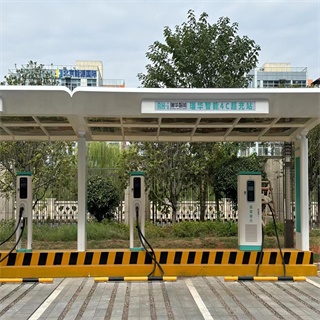Level 3 Charger at Home: A Complete Guide
As electric vehicles (EVs) become more popular, the demand for fast charging solutions continues to rise. Level 3 chargers, also known as DC fast chargers, are the fastest charging options available, often providing a full charge in under an hour. But can you install a Level 3 charger at home? While these chargers are ideal for public stations and highway rest stops, is it a practical solution for residential use? In this article, we’ll explore the benefits of Level 3 chargers, the installation requirements, and whether they’re a suitable choice for home use, helping you make an informed decision.
Can i install a level 3 charger at home?
Level 3 chargers, or DC Fast Chargers, are renowned for their ability to recharge an electric vehicle (EV) in under an hour, making them the fastest option available. However, while this speed is advantageous, installing a Level 3 charger at home is typically not practical. The high installation costs, ongoing maintenance, and significant electricity demands can quickly lead to very expensive bills, making it an impractical choice for most homeowners.
For the vast majority of EV owners, a Level 2 charger is more than adequate for home use. It provides a faster charging time compared to the standard Level 1 charger, while remaining much more affordable and easier to install. If you’re considering installing a Level 2 charger, RUIHUA can assist you in selecting the right system and provide a free estimate for residential installation.
What is Level 3 EV Charging?
If you own an electric vehicle (EV), you’ve likely heard about Level 3 charging, also known as DC Fast Charging. This is the fastest way to recharge your car’s battery, and it’s especially useful for businesses that rely on fleet vehicles or want to offer quick charging solutions for their employees and customers.
Unlike Level 1 or Level 2 chargers, which can take several hours to fully charge an EV, Level 3 chargers can get the job done in a fraction of the time—typically under an hour. For those with busy schedules or businesses that need to keep their vehicles on the road, Level 3 charging provides unmatched convenience.
However, while these chargers are ideal for people looking to maximize their EV’s efficiency, they are not suitable for everyone. Level 3 chargers are significantly more expensive than lower-powered options and require extensive modifications to your home’s electrical system to handle the high power demands. For most homeowners, the cost and complexity of installation make Level 3 charging impractical.
In summary, while Level 3 EV chargers offer incredible speed and are great for commercial use, they are generally not the right fit for home installations due to their high cost and infrastructure requirements. For most residential users, Level 2 chargers provide an efficient and more affordable solution for daily charging needs.

The Difference Between the Levels of EV Chargers
When it comes to charging electric vehicles (EVs), there are three main levels of chargers, each offering different power capacities, installation requirements, and charging speeds.
Level 1 Chargers:
- Power and Charging Speed: Level 1 chargers are basic, low-power chargers that operate on a standard 120-volt AC outlet. Due to their low power, they provide a slow, trickle charge to the EV’s battery. Charging can take 24 hours or more to reach a meaningful charge, making it less suitable for quick top-ups.
- Installation: The installation process for Level 1 chargers is simple and requires no special setup. You simply plug the charger into a standard wall outlet, and you’re ready to go. It’s a plug-and-play solution.
- Ideal Use: These chargers are great for overnight charging at home when the vehicle is parked for extended periods.
Level 2 Chargers:
- Power and Charging Speed: Level 2 chargers deliver significantly more power compared to Level 1, with the ability to supply up to 19.2 kW, depending on the design. They charge the EV’s battery much faster, typically allowing a full charge overnight.
- Installation: Installing a Level 2 charger is more complex than Level 1. It usually requires a dedicated 240-volt circuit and may require a building permit and inspection, depending on local regulations. While installation is more involved, it’s still manageable for most residential settings.
- Ideal Use: Level 2 chargers are commonly used both at home and in public charging stations, offering a balance between convenience and charging speed.
Level 3 Chargers (DC Fast Chargers):
- Power and Charging Speed: Level 3 chargers, or DC fast chargers, are the most powerful option, capable of delivering a significant charge in just 30 minutes or less. These chargers can provide up to 350 kW of power, depending on the model.
- Installation: The installation of Level 3 chargers requires a high-power 480-volt AC utility service, which is not typically available in residential areas. As a result, they are generally installed in commercial settings, such as highway rest stops or urban charging stations.
- Ideal Use: These chargers are designed for quick, high-capacity charging on the go and are ideal for long trips or when you need a fast recharge.
Is a Level 3 Home Charger Worth the Cost?
Level 3 chargers offer fast charging, recharging your EV in about 30 minutes, which is perfect if you’re in a rush. Having one at home means you won’t need to rely on public stations, making it very convenient.
However, Level 3 chargers are more expensive to install compared to Level 1 or Level 2 chargers. They require high-power electrical systems, which increases installation costs. Additionally, because they use a lot of electricity, they can lead to higher energy bills.
If speed and convenience are top priorities for you, a Level 3 charger might be worth the investment. But if you’re looking for a more affordable option, a Level 2 charger could be a better choice.
Home Level 3 Chargers and High Electricity Bills
Level 3 chargers can lead to high electricity bills due to their rapid power consumption. However, there are strategies to minimize costs:
Charge During Off-Peak Hours: Many utility companies offer lower electricity rates during off-peak hours, typically at night. Charging your EV during these times can help reduce your energy costs.
Time-of-Use Meters: Installing a time-of-use meter allows you to track electricity usage during peak and off-peak times. Some utility companies even offer discounts for customers who use these meters.
Consider a Level 2 Charger: If fast charging isn’t essential, a Level 2 charger might be more cost-effective for home use, as it consumes less electricity and is typically more affordable to install.
Your Best Option for Fast Charging at Home 🔌
While it’s unfortunate that Level 3 DC fast chargers aren’t suitable for home use, there’s still a great alternative: the Level 2 AC charger.
Level 2 chargers provide the fastest at-home charging option compatible with your home’s electrical grid. While they don’t match the lightning-fast speeds of DC fast chargers, they’re highly efficient. Simply plug in your EV overnight, and you’ll wake up to a fully charged battery, ready to hit the road.
For fast, reliable, and convenient charging at home, Level 2 is the way to go!

Summary
Level 3 chargers offer the fastest EV charging but are impractical for home use due to high costs, electricity demands, and complex installation requirements. Most homeowners find Level 2 chargers more suitable, as they balance speed and affordability, providing a full charge overnight with a simpler installation process. To reduce electricity costs, charging during off-peak hours or using time-of-use meters is recommended. While Level 3 is ideal for public or commercial use, Level 2 remains the best home solution for most EV owners.




